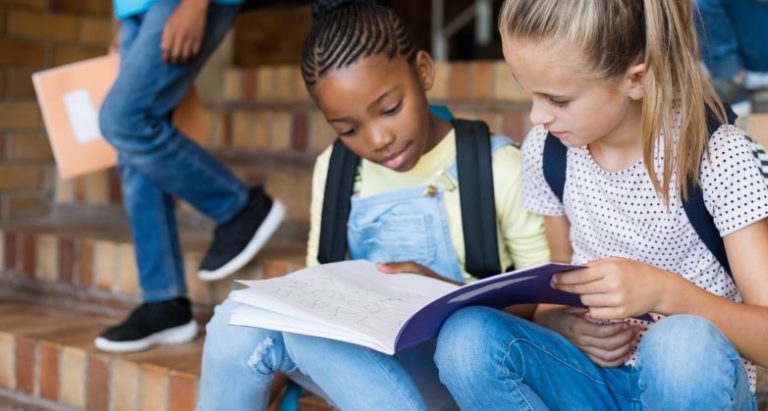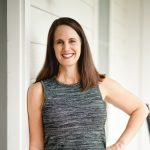By Melanie S. Meyer, originally published in the December, 2021 issue of Equity & Access
New York City public schools have come under fire for the demographic composition of the city’s specialized high schools, such as the Bronx High School of Science and Stuyvesant High School. Eighth graders who perform well on the Specialized High School Admissions Test (SHSAT) may be offered admission to one of these highly-selective schools, but the acceptance rate hovers around one to two percent (Camera, 2019).
Public criticism stems from the fact that the racial composition of these high schools does not mirror the composition of the New York City public school system, an issue referred to as underrepresentation. In 2019, Black and Latinx students made up “less than 11 percent of students in the specialized high schools, despite accounting for more than 70 percent of students in New York City public schools on the whole” (Camera, 2019). The 2021 admissions data shows this trend continuing with only nine percent of specialized high school acceptance offers going to Black and Latinx students (Elsen-Rooney, 2021).
The underrepresentation of students of color in advanced academic programs is not a new problem. Excellence gaps, which are differences in advanced levels of performance between student groups, have been increasing in New York City’s specialized high schools for years.
Dr. Steven Fredericks, former Executive Director of New York Edge, and current Professor at Johns Hopkins University, saw a way to tackle underrepresentation and excellence gaps by starting early and focusing on long-term solutions.
New York Edge operates after school programs that serve 40,000 K-12 students across 150 New York City public schools. Three hours per day, five days a week and on school holidays, students participate in self-selected sports and arts activities and get help with their homework.
Fredericks recalled, “Around 2016, I was asked to write a review of a book called Excellence Gaps in Education: Expanding Opportunities for Talented Youth by Jonathan Plucker and Scott Peters. I read the book and a lightbulb went off. My after school programs don’t have the structural issues that public schools do, so I can hire who I want. We can run any programs we want. So, I thought, why don’t we try to apply these principles in an after school setting?”
For the pilot program in 2017, they chose to start early and selected a Bronx elementary school where only one in three students was performing at grade level in math and reading. To identify third and fourth grade students for The Excellence Project pilot program, staff reviewed input from parents, teachers, and after school staff, as well as all student grades and test scores. Additionally, both students and parents had to agree to participate, since parents were asked to communicate with the project staff regularly.
After the screening process, the recommended students were placed in the program, but any third or fourth grade student could also self-identify if they were willing to commit to the program. A total of 40 students were identified, and in place of the traditional homework help time, these students, in two cohorts of 20, interacted with a science, technology, engineering, arts, and mathematics (STEAM) content specialist and a counselor/mentor for 90 minutes each day. Excellence Project participants were provided with computerized adaptive learning programs to work on math and reading skills, as well as STEAM enrichment activities (e.g., coding, robotics), social and emotional interventions (e.g., meditation, yoga), and take-home computers. The staff also used flexible scheduling to ensure that students who chose to participate in The Excellence Project would not miss the other sports and arts activities that were part of the New York Edge after school programming.
Although it was not a qualification for inclusion in the program, all of the participants came from families whose income was at or below the poverty line. In the first year, The Excellence Project after school pilot program saw positive student outcomes ranging from improved behavior in the classroom and at home to academic performance that outpaced their grade-level peers. Those gains continued as the program expanded into fifth grade and added a new cohort of third graders in 2018. This program was created using research-based best practices for closing excellence gaps, including flexible identification for advanced learning opportunities, universal screening with local norms, instruction delivered by well-trained professional educators, frontloading foundational skills for advanced learning in reading and math, psychosocial interventions, and ability grouping (Plucker & Peters, 2016; Plucker et al., 2017). Despite the program’s success, there were critics of the project.
When he encountered pushback, Fredericks countered by explaining, “When a child exhibits athletic prowess, we don’t say, you don’t need a coach. When somebody has artistic talent, we don’t deprive them of training. When we have kids who are intellectually talented, there is a tendency for educators and policymakers to say, those kids can deal with it on their own. We’re trying to break that cycle and address their talents, too.”
Over time, students who have had advanced learning opportunities as elementary students may be better prepared to excel on the SHSAT and earn admission to one of the selective specialized high schools in the New York City public school system. For the culturally, linguistically, and economically diverse students in this Bronx elementary school, this could be the edge they need to access academic talent development opportunities in high school and beyond.
Although Dr. Fredericks is no longer with New York Edge, he is partnering with Johns Hopkins University to establish the After School Excellence Network across the United States to support school districts that want to create similar programs. Fredericks explained, “Our mission is to identify children who are capable of advanced learning and give them opportunities to excel academically. We can accomplish that, and I think we have already started to make a difference. We think this could profoundly change the face of urban education in the United States.” To learn more about the After School Excellence Network, contact Dr. Fredericks at sjfredericks@jhu.edu.
References
Camera, L. (2019, March 19). New York City’s most selective high schools also most segregated. U.S. News and World Report.
https://www.usnews.com/news/education-news/articles/2019-03-19/race-divides-elite-new-york-city-high-schools
Elsen-Rooney, M. (2021, April 29). Number of Black and Latino students accepted to NYC’s specialized high schools drops. New York Daily News.
https://www.nydailynews.com/new-york/education/ny-specialized-high-school-admission-rates-20210429-5zx7m63hjjflvfzcpklbwzu4i4-story.html
Plucker, J. A., & Peters, S. J. (2016). Excellence gaps in education: Expanding opportunities for talented youth. Harvard Education Press.
Plucker, J. A., Peters, S. J., & Schmalensee, S. (2017). Reducing excellence gaps: A research-based model. Gifted Child Today, 40, 245-250.
https://doi.org/10.1177/1076217517723949
Additional Resources
Plucker, J. A. (Host). (2019, June 11). What can we learn from the New York selective schools controversy? (No. 11). [Audio podcast episode]. In Bright Now. Johns Hopkins Center for Talented
Youth.
https://johnshopkinscty.org/bright-now-podcast
Melanie S. Meyer is a Postdoctoral Research Fellow at Johns Hopkins University and holds a Ph.D. in Educational Psychology from the University of North Texas. She has been a teacher in gifted and advanced academic classrooms for over 20 years. Her research focuses on adolescent identity development, school-based talent development, and policy issues that impact the college, career, and military choice process for talented students.
- Melanie S. Meyerhttps://ace-ed.org/author/mmeyer/
- Melanie S. Meyerhttps://ace-ed.org/author/mmeyer/





